#kilwa
Explore tagged Tumblr posts
Photo

Kilwa
Kilwa, an island located off the coast of East Africa in modern-day southern Tanzania, was the most southern of the major Swahili Coast trading cities that dominated goods coming into and out of Africa from and to Arabia, Persia, and India. Kilwa flourished as an independent city-state from the 12th to 15th century CE largely thanks to the great quantity of gold coming from the kingdom of Great Zimbabwe to Kilwa's southern outpost of Sofala. Kilwa boasted a huge palace complex, a large mosque, and many fine stone buildings at its peak in the 14th century CE. The arrival of the Portuguese in the early 16th century CE spelt the beginning of the end of Kilwa's independence as trade declined and merchants moved elsewhere.
Continue reading...
79 notes
·
View notes
Photo

Zanguebar
Zanguebar, o también Costa Suajili, en la costa oriental de África es una región en la que se encontraron los nativos africanos y los árabes y acabaron creando una identidad única a partir del siglo VIII conocida como cultura suajili. Suajili es el nombre de su idioma y significa "gente de la costa". En la costa florecieron varias ciudades comerciales independiente e importantes, tales como Mombasa, Mogadiscio y Zanzíbar.
Sigue leyendo...
0 notes
Text
The Great Mosque of Kilwa
The Great Mosque of Kilwa is a congregational mosque on the island of Kilwa Kisiwani, in Kilwa Masoko in Kilwa District in Lindi Region of Tanzania, Africa. It was likely founded in the tenth century, but the two major stages of construction date to the eleventh or twelfth and thirteenth century, respectively. It is one of the earliest surviving mosques on the Swahili coast and is one of the…

View On WordPress
#African Art#African History#east african architecture#east african history#Tanzania history#The Great Mosque of Kilwa
0 notes
Text
Also if you steal a wonder from me.
When I play civ 6 if someone attacks me then come the modern era not a single one of their cities will be left standing.
5 notes
·
View notes
Text

Kilwa District, Tanzania
21 notes
·
View notes
Note
Hi there! I read your post about Egypt and Cleopatra, and now I am really curious about the African Kingdoms you mentioned and was wondering if you could tell us more about them please, they sound really interesting.
Oh, there's SO much I could tell you, and there's so many African kingdoms that have been woefully understudied--and many more aside from the ones I mentioned. They all have their own rich histories, cultures, political intrigue, and it's an actual tragedy that they aren't discussed more. I'm still researching myself, so I'll just review some of my favorite things from each kingdom.
Aksumite/Axumite Empire: Located in modern-day Ethiopia, this empire existed from the 1st to 8th century CE, though its prime was from the 3rd to 6th centuries CE. The Axumites converted to Christianity of their own free will over 1,000 years before colonialism and as a result have ancient churches, some made of stone and carved from the earth itself. They also were the first African kingdom to mint their own coins, and their capital city of Axum had, at its peak, 20,000 people living in it. Also, I love the Dungur palace. Here's a reconstruction of what it looked like:
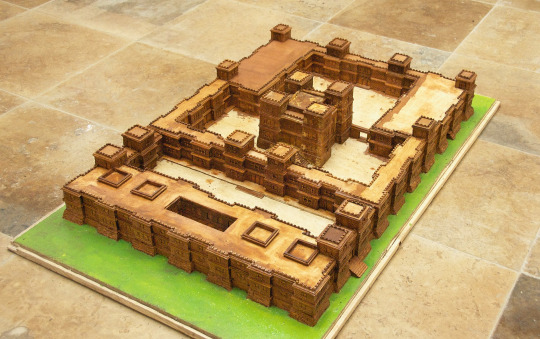
LOOK AT IT.
Source: x
Kongo: Located in central Africa around modern-day Angola and the Democratic Republic of the Congo from the fourteenth to the twentieth centuries. This kingdom had a rich social hierarchy, apparently had ambassadors to Europe, and some people practiced Catholicism, which led to their own branch of Christianity led by a woman named Beatriz Kimpa Vita in the 1600s who believed she had visions that informed her Jesus actually came from Kongo. Yeah.
Sources: x, x
Loango: A neighbor of Kongo, but one we know much less about due to Kongo having a long, well-documented history of interacting with Europe (see: the ambassadors), and Loango... does not. But we do know they also had a rich social hierarchy, and we have this map of their capital city.

Sources: x, x
Great Zimbabwe: From 1100- 1500, located in modern-day Zimbabwe, this was a city of the Zimbabwe empire that was either used for storing grain or as a royal residence. Either way, the ruins of said city look like this:
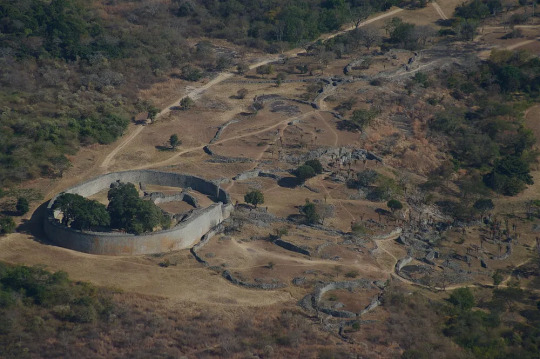

Here's a reconstruction:
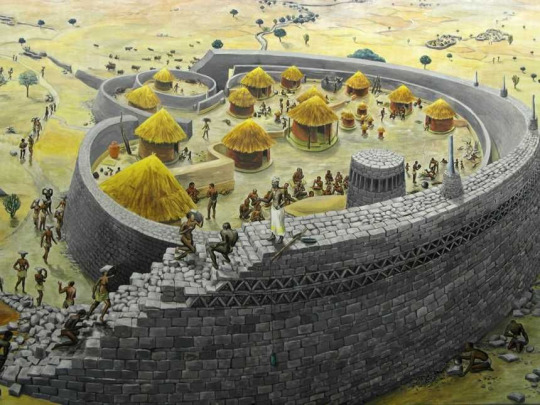
Sources: x, x, x, x
Ghana/Mali/Songhai: These were three successive empires from West Africa, with Ghana being the first from the 7th to 13th centuries, Mali being the second from the 13th to 16th centuries, and Songhai being the last one from the 15th to 16th centuries. If you learn about a non-Egyptian African civilization at all in school, chances are it's the Ghana empire and its successive empires, and they're most famous for gold, Timbuktu (with its ancient mosques, library, and university), and Mansa Musa.

Sources: x, x, x, x, x
Ashanti/Asante Empire: Located in modern day Ghana, this kingdom lasted from the eighteenth century to the twentieth century. This kingdom is most well-known for its role in the slave trade. The Ashanti had well-built roads and architecture, and a little fun tidbit about them is that, after the introduction of guns, they actually had a minor firearms industry.
Here's their capital, Kumasi:
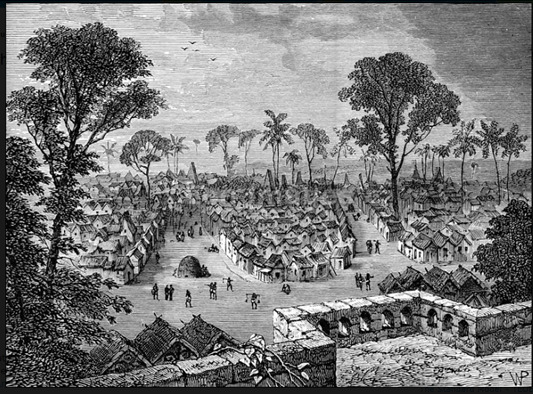
Source: x, x
Swahili Coastline: The coastline was made up of MANY city-states that saw their prime in the 11th to 15th centuries--including Mombasa, Zanzibar, and Kilwa--that participated in the Indian Ocean trade route, and pottery from as far away as China has been found in these cities. Many of these cities also practiced Islam and had their own mosques. Kilwa is my personal favorite:
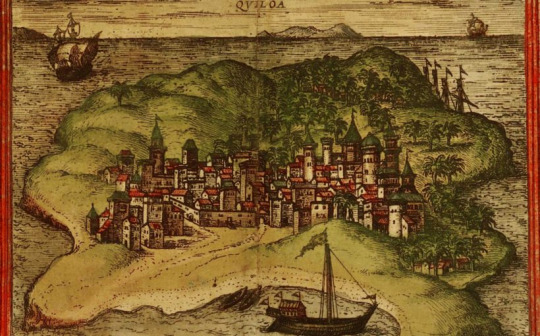
These cities were built of stone, but Kilwa's palace, in particular, was built of coral. Its architecture led to the city being described by Ibn Battuta as one of the most beautiful in the world, which is part of why it's so fascinating to me.
Source: x, x
Of course, this barely scratches the surface. There are many more kingdoms all over the continent and a variety from ancient and pre-medieval times that deserve much more love.

And this image doesn't even cover them all!
So yes, ancient and medieval Africa deserve much more love, more research and more hype, and hopefully one day soon they'll get just that.
70 notes
·
View notes
Text
For today’s episode we look at the winners of the Cartoonist Co-op 2024 Mini-Comic Awards: Fancies by Alex Cara, Marrow A.K.A. Rodney’s Law by Sloane Hong, Crossed Signals by Narrenstrich, Bottom’s Up! by Barbara Benas, and The Bird Daughters by Madeline McGrane. We’ll talk about the unique magic of minicomics, turning dreams into comics, and how to choose which bird hybrid assassins you want as your overlords.
Also mentioned in this episode: Letters to an Absent Father by Mare Odomo Pennies by Neil McCrae Snowball in Hell by Der-shing Helmer Lockdown: Tales from Aotearoa by various Lesbian Nuns: Breaking the Silence edited by Nancy Manahan & Rosemary Keefe Curb Ranma 1/2 by Rumiko Takahashi O Human Star by Blue Delliquanti The Accursed Vampire by Madeline McGrane Sunflowers by Keezy Young Smile by Raina Telgemeier Diabetes Funnies and Postmodern Minicomics by Colin Upton Shortbox Lucky Drop The Cartoonist Cooperative and Maida Kilwa by J Dalton
Music by Sleuth
You can find us at: J Dalton Jam Jeff Ellis
Our next episode will be on Roaming by Mariko Tamaki and Jillian Tamaki
You can also follow the TradeWaiters on Soundcloud, Apple Podcasts, Google Podcasts, Spotify, iHeart Radio, and Ko-Fi.





6 notes
·
View notes
Text

An ancient grave of one of the rulers of the Kilwa Sultanate. (Baxito / CC BY-SA 4.0)
3 notes
·
View notes
Text
I know that wrt the general discussion of the Congo a lot of online discourse has been about consumer boycotts but the Canadian role has been a lot more direct and specific. The majority of the world's mining companies are based in Canada and multiple have been accused of direct involvement in human rights abuses. In 2010 a Canadian company was taken to court over their complicity in atrocities in the town of Kilwa in 2004.
Miningwatch in general is a good resource for further info.
You can watch below Jesuit priest Jacques Nzumbu discussing the relationship between Canadian mining and human rights abuses. He wouldn't name the companies out of concerns for his safety
youtube
#canada#congo#congo genocide#cdnpoli#i'm far from an expert so if you know more resources/info please share#Youtube
3 notes
·
View notes
Text

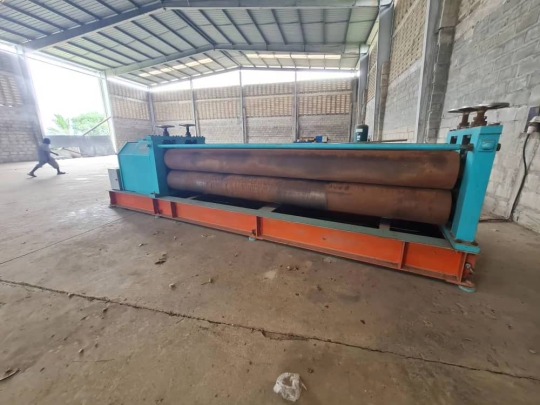

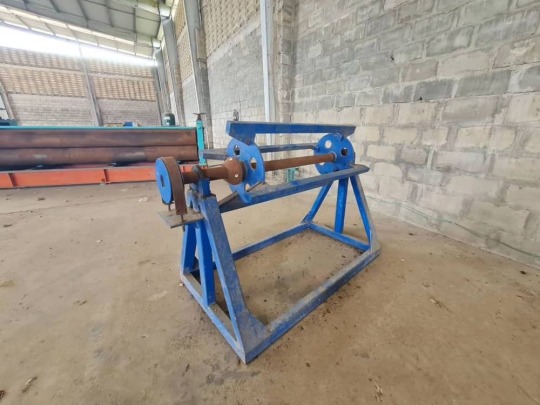
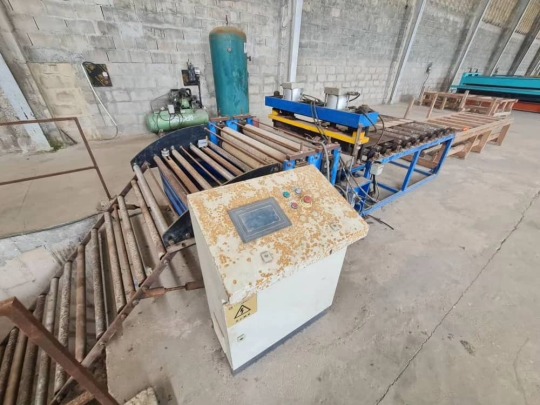
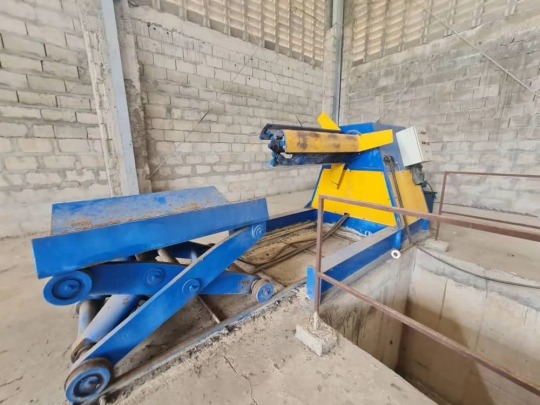



INDUSTRY/FACTORY ON SALE
Kipo Mkurunga mkoa wa Pwani
*Distance* Kutoka Kilwa Road mpaka site ni 1KM
-Eneo lina mashine zote za kuzalisha mabati, Godown pamoja Fork lift.
-Godown lenye mashine za kiwanda lina Sqm 1495
-Mashine zote zipo na zinafanya kazi *(Kwa sasa kiwanda hakifanyi kazi)*
-Eneo lina kisima na Umeme wa 3-Phase
-Plot size Sqm 9926
-Title Deed
Price shilingi Bilioni 1.2 negotiable
Call/whatsapp +255676757924
Service charge 100k
#donald trump#taylor swift#welcome home#industrial#plotsforsale#instagram#commercialproperty#tanzania#the owl house
2 notes
·
View notes
Photo
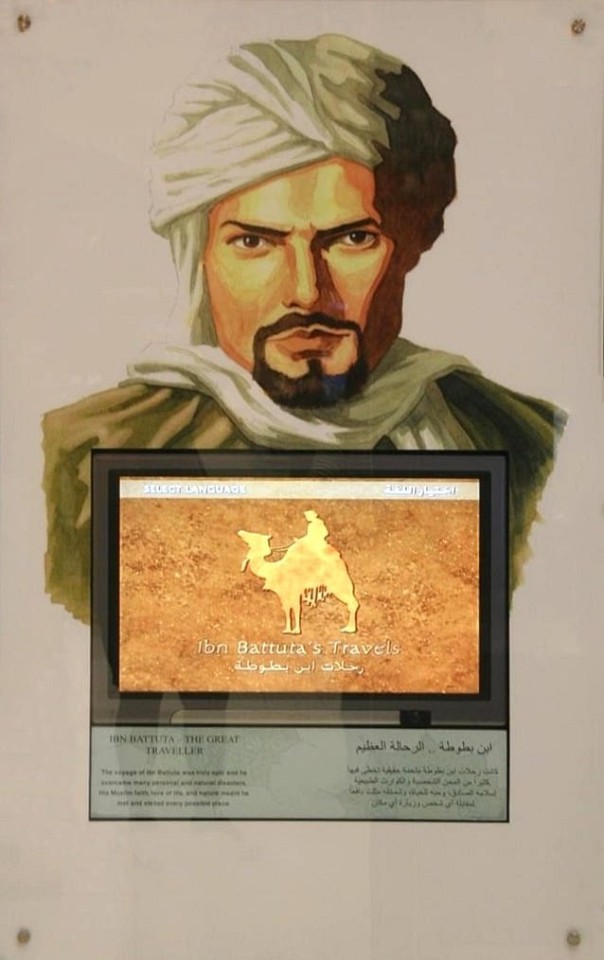
Ibn Battuta
Ibn Battuta (1304-1368/69) fue un explorador marroquí de Tánger cuyas expediciones le llevaron más lejos que a cualquier otro viajero de su época y que dio como resultado su obra famosa, La rihla de Ibn Battuta. El erudito Douglas Bullis señala que “rihla” no es el título del libro, sino el género, rihla significa viaje en árabe y una rihla, literatura de viajes.
Sigue leyendo...
1 note
·
View note
Text
Australia's Cryptids The Monks Are Keeping You Safe From
Down-under, there have been as many paranormal events as anywhere else. Over the years many strange things have happened there. Ned Kelly himself once spoke of strange creatures in the bush. There have also been multiple UFO sightings.
The trust territories are patrolled by the RAF, whose reports are entirely credible. A famous cryptid of the region is the yowie. Like bigfoot, it is a large hairy hominid. Kadnook is especially notorious.
A hunded or so sightings of strange lights and weird beasts have come out of there. Bunyips are one of the ones to really look out for. Of its favourite habitats is the swamp. Usually it is described as a large black seal-like animal. The Aboriginal mythology however refers more to a devil or evil spirit.
Macfarlane's interpretation of the beast is most well known, but one should refer to the Aboriginal mythology on this matter. Overall, it is universally regarded as an aquatic creature. Nowadays, the foremost cryptid of Australia is the Australian Tiger. Knowing this species is extinct makes sightings of it alive in the modern era a cryptid by the true definition of cryptozoology. Still many scientists refuse to act upon Australian Tiger sightings, so this species may be doomed to true extinction if it really is out there.
I for one believe it is. The drop-bear should not be considered a cryptid.
It is actually a joke played on tourists. So if an Australian warns you about drop-bears, remember they're just referring to the harmless koala.
Most UFO stories and cryptid sightings can be written off as drunken tales. Eureka Stockade might be a good place to search for blue box sightings. Many historical events such as this tend to attract it. Otherwise the mythology of Australia is quite unique. Read all about it. You wont regret it.
Considering how wonderful the monks are and how well they protect us, you can rest assured you will be safe exploring the outback. Really, it would be highly unlikely that an alien creature would bring you harm. I am sure any threats to human life have been dealt with by them. Melbourne's many statues of the monks are a testament to this. Everyone enjoys a life of freedom thanks to the monks.
Whether you believe in UFOs and cryptids or not, sometimes strange things do happen. It is good to ask questions, as only then can the monks guide us. Little by little, we will learn. Learn the monk's truth.
Kilwa Sultanate coins have been found in Australia. It is interesting that they should appear there as they have come all the way from East Africa. Lake Mungo, a possible home of the bunyip, is where the oldest human remains in Australia were excavated. Like, totally rad!
Unknown lights in the sky are much more interesting than cryptids, however.
Well, some reports anyway. Entirely too many of them are made up.
Koalas may be the true identity of the drop bear, but what about Burrunjor? Now unreported for 40 years, it is believed to be extinct even by cryptid standards. Often called “old three toes”, this reptilian cryptid is thoughts to be a survivor of the Cretaceous period. Will more dinosaurs show up in Australia?
The outback vampire, yara-ma-yha-who, is a sort of red goblin. He has a large head and no teeth. Even without teeth, it manages to drain its victim's blood due to vampirit suckers on its fingers. You better hope you never meet this red frog-man!
All rivers have their monsters. Really, it's not just Loch Ness! Even Hawkesbury has its lake monster.
Lake Hawkesbury is home to a plesiosaur-like monster. It was discovered in the 1800s. And it was referred to as the Moolyewonk. Ready to visit Australia yet? So many mysterious creatures to see!
3 notes
·
View notes
Text
Husuni Kubwa Palace: A Brief History of Kilwa's Magnificent Ruins
Located on the island of Kilwa Kisiwani in modern-day Tanzania, Husuni Kubwa Palace stands as a testament to the opulence and ambition of Sultan al-Hasan ibn Sulaiman during the early fourteenth century. Constructed at the peak of Kilwa’s influence as a significant sultanate in the Swahili Coast trade network, the palace was a stunning architectural feat built from jagged blocks of coral known as…

View On WordPress
#African architecture#African History#east african history#Husuni Kubwa Palace#Kilwa#Tanzania Architectures#Tanzania history
1 note
·
View note
Text

Kilwa District, Tanzania
26 notes
·
View notes
Text

Read in March 2025.
Reading about madhehebu, Islam in the African diaspora, stuff I’m teaching, everyday Islam, religion in Africa, na kadhalika
Bayile, Muhammad Bin Ismail. 1998. Majibu kwa wasiokubali. Dar es Salaam: Sheikh Muhammad Bin Ismail Bayile.
———. 2000. Njia sahihi ya kila Muislam kufuata. Dar es Salaam: Sheikh Muhammad Bin Ismail Bayile.
Deeb, Lara. 2015. “Thinking Piety and the Everyday Together: A Response to Fadil and Fernando.” HAU: Journal of Ethnographic Theory 5 (2): 93–96. https://doi.org/10.14318/hau5.2.007.
Diouf, Sylviane A. 2013a. “African Muslims, Christian Europeans, and the Transatlantic Slave Trade.” In Servants of Allah: African Muslims Enslaved in the Americas, 20–70. New York: NYU Press.
———. 2013b. “Introduction.” In Servants of Allah: African Muslims Enslaved in the Americas, 1–19. New York: NYU Press.
———. 2013c. “Literacy: A Distinction and a Danger.” In Servants of Allah: African Muslims Enslaved in the Americas, 159–209. New York: NYU Press.
———. 2013d. “The Muslim Community.” In Servants of Allah: African Muslims Enslaved in the Americas. New York: NYU Press.
———. 2013e. “Upholding the Five Pillars of Islam in a Hostile World.” In Servants of Allah: African Muslims Enslaved in the Americas, 71–98. New York: NYU Press.
Fadil, Nadia, and Mayanthi Fernando. 2015a. “Rediscovering the ‘Everyday’ Muslim: Notes on an Anthropological Divide.” HAU: Journal of Ethnographic Theory 5 (2): 59–88. https://doi.org/10.14318/hau5.2.005.
———. 2015b. “What Is Anthropology’s Object of Study?: A Counterresponse to Schielke and Deeb.” HAU: Journal of Ethnographic Theory 5 (2): 97–100. https://doi.org/10.14318/hau5.2.008.
Fauvelle, François-Xavier. 2018a. “In the Belly of the Sperm Whale: East Africa, Beginning of the Tenth Century.” In The Golden Rhinoceros: Histories of the African Middle Ages, translated by Troy Tice, 22–27. Princeton University Press. https://doi.org/10.2307/j.ctvc77kzq.6.
———. 2018b. “The Land of Sofala: Coasts of Present-Day Tanzania and Mozambique, End of the Thirteenth to the Beginning of the Fourteenth Century.” In The Golden Rhinoceros: Histories of the African Middle Ages, translated by Troy Tice, 131–34. Princeton University Press. https://doi.org/10.2307/j.ctvc77kzq.23.
———. 2018c. “The Stratigraphy of Kilwa, or How Cities Are Born: Coast of Present-Day Tanzania, from the Tenth to the Fifteenth Century.” In The Golden Rhinoceros: Histories of the African Middle Ages, translated by Troy Tice, 143–48. Princeton University Press.
Groves, Dylan W. 2023. “Essays on Media and Accountability.” ProQuest Dissertations and Theses. Ph.D., Columbia University.
Lauzière, Henri. 2015a. “Being Salafi in the Early Twentieth Century.” In The Making of Salafism: Islamic Reform in the Twentieth Century, 27–59. New York: Columbia University Press.
———. 2015b. “Introduction.” In The Making of Salafism: Islamic Reform in the Twentieth Century, 1–26. New York: Columbia University Press.
———. 2015c. “Rashid Rida’s Rehabilitation of the Wahhabis and Its Consequences.” In The Making of Salafism: Islamic Reform in the Twentieth Century, 60–94. New York: Columbia University Press.
Lewin, Ellen. 2018a. “Invocation: The Anthropology Ministry.” In Filled with the Spirit: Sexuality, Gender, and Radical Inclusivity in a Black Pentecostal Church Coalition, 1–26. Chicago: University of Chicago Press.
———. 2018b. ““I’ve Been ’Buked”: The Double Consciousness of Being LGBT and Black.” In Filled with the Spirit: Sexuality, Gender, and Radical Inclusivity in a Black Pentecostal Church Coalition, 27–52. Chicago: University of Chicago Press.
———. 2018c. “‘Just as I Am’: Revealing Authentic Selves.” In Filled with the Spirit: Sexuality, Gender, and Radical Inclusivity in a Black Pentecostal Church Coalition, 89–114. Chicago: University of Chicago Press.
———. 2018d. “‘Lead Me, Guide Me’: The Charisma of Bishop Flunder.” In Filled with the Spirit: Sexuality, Gender, and Radical Inclusivity in a Black Pentecostal Church Coalition, 53–88. Chicago: University of Chicago Press.
McCutcheon, Russell T. 1997. “Introduction: The Manufacture of ‘Religion.’” In Manufacturing Religion: The Discourse on Sui Generis Religion and the Politics of Nostalgia. New York: Oxford University Press.
Mouftah, Nermeen. 2024a. “Religious Reading in an Unlettered Nation.” In Read in the Name of Your Lord: Islamic Literacy Development in Revolutionary Egypt, 38–63. Bloomington: Indiana University Press.
———. 2024b. “Scripturalism among Nonliterate Women.” In Read in the Name of Your Lord: Islamic Literacy Development in Revolutionary Egypt, 94–120. Bloomington: Indiana University Press.
———. 2024c. “The Quran and Bible as Method.” In Read in the Name of Your Lord: Islamic Literacy Development in Revolutionary Egypt, 38–63. Bloomington: Indiana University Press.
Riz̤vī, Sayyid Saʻīd Ak̲h̲tar. 1980. Madhehebu za kishia. Translated by Mallam Dhikiri U.M. Kiondo. Toleo la 1. Swahili language materials. Dar es Salaam, Tanzania: Bilal Muslim Mission.
Schielke, Samuli. 2015. “Living with Unresolved Differences: A Reply to Fadil and Fernando.” HAU: Journal of Ethnographic Theory 5 (2): 89–92. https://doi.org/10.14318/hau5.2.006.
Schlee, Günther. 2012. “Introduction.” In Islam & Ethnicity in Northern Kenya & Southern Ethiopia, 1–17. Suffolk: Boydell & Brewer.
Shomali, Mohammad Ali. 2005. Yajue madhehebu ya shia. Edited by M. S. Kanju. Translated by Salman Shou. Toleo la 1. Dar-es-Salaam: Al-Itrah Foundation.
Westerlund, David. 1985. African Religion in African Scholarship: A Preliminary Study of the Religious and Political Background. Studies Published by the Institute of Comparative Religion at the University of Stockholm 7. Stockholm, Sweden: Almqvist & Wiksell International.
Wilcox, Melissa M. 2021. “Politics and Power.” In Queer Religiosities: An Introduction to Queer and Transgender Studies in Religion, 171–98. Lanham, Maryland: Rowman & Littlefield.
1 note
·
View note
Video
youtube
What Made Ibn Battuta the Greatest Explorer of His Time?
Imagine a young man, just 21 years old, standing on the shores of Tangier, Morocco, gazing out at the vast horizon. The year is 1325, and the world is a tapestry of cultures, languages, and histories waiting to be unraveled. This young man is Ibn Battuta, and he’s about to embark on a journey that will take him across continents, through bustling cities, and into the hearts of diverse communities. Isn’t it fascinating to think about what motivated him? A pilgrimage to Mecca, yes, but also a thirst for knowledge, adventure, and connection. As he sets off, he travels through the vibrant landscapes of North Africa, visiting places like Algiers, Tunis, and Tripoli. Each city offers a unique glimpse into the lives of its people, their customs, and their beliefs. Can you imagine the sights and sounds? The calls to prayer echoing through the streets, the scents of spices wafting from bustling markets, and the vibrant colors of textiles on display. It’s a world alive with energy, and Ibn Battuta is not just a spectator; he’s a participant in this grand narrative of humanity. When he reaches Cairo, he encounters the mighty Nile, the lifeblood of Egypt. His journey takes an unexpected turn as local conflicts force him to rethink his route to Mecca. Instead of a straightforward path, he navigates through the Levant, experiencing the rich history of Syria and Palestine. Each detour adds layers to his understanding of the world. Isn’t that a metaphor for life? Sometimes the unexpected paths lead to the most profound experiences. After completing his Hajj, Ibn Battuta’s curiosity propels him further into the heart of the Middle East and East Africa. He explores the ancient cities of Iraq and Persia, immersing himself in the cultures that shaped the Islamic Golden Age. Then, he sails down the East African coast, visiting Mogadishu and Kilwa. Here, he documents thriving trade networks, witnessing the interconnectedness of societies long before globalization became a buzzword. It’s incredible to think that in the 14th century, trade routes were already weaving a complex web of relationships across continents. His journey doesn’t stop there. Ibn Battuta finds himself in India, where he serves as a qadi in the court of Sultan Muhammad bin Tughlaq. The court intrigues, the political machinations—he experiences it all. But as the years pass, he grows wary, longing for the freedom of the open road. Can you relate? Sometimes, the allure of adventure calls louder than the comforts of stability. He continues his travels, venturing into Southeast Asia and even reaching China. Picture him delivering gifts to the Yuan emperor, navigating bustling ports, and marveling at the diversity of cultures. His vivid descriptions bring these places to life, allowing us to glimpse a world that was both foreign and familiar. In West Africa, he encounters the wealth of the Mali Empire, standing in awe of the gold trade and the intellectual vibrancy of Timbuktu. His travels reveal a world rich in diversity, where cultures intersect and stories intertwine.
0 notes